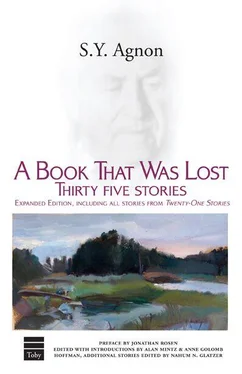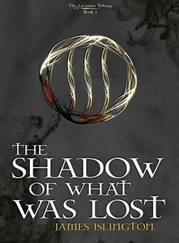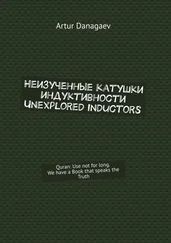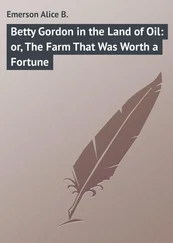Introduction
In the fall of 1913, Agnon attended the Eleventh Zionist Congress in Vienna. Shortly after, he was called home because of the death of his father, but he arrived one day too late for the funeral. Whatever the circumstances, this delay suggests an ambivalence never to be fully overcome, an ambivalence that is as much a part of his character as the unqualified reverence for his father that he expressed elsewhere. Looked at retrospectively, in light of the proliferation in his fiction of themes of lateness and delay in fulfilling important obligations, Agnon’s failure to arrive on time for his father’s funeral takes on dramatic resonance. Literary reverberations of this theme can be felt in the stories that comprise the last section of this anthology; there you will find stories that vary from the dreamlike to the realistic but convey nevertheless a sense of lapses or losses that can never be made good.
The years of World War i saw the arrival in western Europe of large masses of refugees from eastern Europe. These “Ostjuden,” or eastern Jews, met with ambivalence and hostility from some German Jews and were romanticized as “authentic” Jews by others, among them Martin Buber. Here we must try to imagine Agnon’s double perspective: he was and was not one of the Ostjuden, given the acculturation to the West he had undergone. In a study of Agnon’s German affiliations, the Israeli critic Dan Miron points out that Agnon’s early years in Galicia brought him closer to Jewish-German influences than to contemporary developments in Russian Hebrew culture, so that he can be regarded as something of a liaison between the two segments of a divided Ashkenazic Jewry. [9]
Scholem describes the Agnon of this period as an extraordinarily sensitive young man, for whom the German Jews were an endless source of fascination. From our vantage point of the present, it seems clear that the differences between eastern and western Jews allowed for a cross-cultural fertilization that enriched immeasurably the scholarship of Scholem and the fiction of Agnon. The stories that Agnon set in Germany give us some indication of the cultural mix of this period. Those that we have selected for the “Germany” section of this anthology provide a sampling of Agnon’s range, from haunting evocations of medieval Jewish communities to quite modern psychological dramas of divorce and postwar devastation.
Scholem shows us Agnon as a young writer who appeared to inhabit an imaginative universe of his own making: “Every conversation with him quickly turned into one or more narratives, stories about great rabbis and simple Jews whose intonation he captured enchantingly. The same magic could be found even in his colorful but completely incorrect German.” [10] Over the many years of their relationship, from Berlin to Jerusalem, Scholem and Agnon would engage in bouts of scholarly banter, each outdoing the other in producing bits of exotic lore from actual or invented sources. Thus Scholem tells us that Agnon persisted in claiming that “Agnon” could not be considered his real name, since it was only an invention, with no roots in the holy books. In a bit of scholarly play, Agnon claimed that the name “Czaczkes” could be found among the mystical names of angels in the Book of Raziel, an ancient Hebrew book of angelology.
In Scholem’s eyes, Agnon appears as something of an aesthete, an Ostjude who enjoyed friendships with German intellectuals. The young writer found himself developing his art amid a linguistic mélange of Yiddish, Hebrew, German, and Russian and an array of ideologies from socialism to Zionism, Jewish mysticism, and Continental philosophy. Here we see also the Agnon who would frequent the Frankfurt dealers in secondhand Hebrew books, and indeed it was a shared interest in old Jewish books that brought Agnon together with the older German-Jewish businessman and bibliophile Salman Schocken. Agnon and Schocken first met toward the end of 1915, when both were attending philosophy lectures in Berlin. Schocken drew on Agnon’s bibliographic knowledge, while Agnon benefited from Schocken’s familiarity with German and European literature. This remarkable relationship has been documented through the recent Hebrew publication of the correspondence between the two men.[11]
Introduction
The relationship took shape at a time when Agnon’s status as an Austrian citizen subjected him to the possibility of induction into the German army. At one point, in 1916, Agnon sought to fail his physical examination by consuming quantities of pills and coffee, and smoking incessantly. Not only did he succeed in flunking the physical, he made himself quite sick and ended up spending four months in the Jewish hospital near the town of Brückenau. During this time, Salman Schocken kept Agnon supplied with reading materials. Providing us with evidence of the scope of his literary interests, Agnon writes to Schocken that he has read Zola’s essay on Flaubert in one breath, not because it was so beautiful, but because it was on Flaubert and anything on Flaubert “goes straight to my heart.” He goes on to ask Schocken to send him the medieval Chanson de Roland , along with Jakob Burckhardt’s writings on the Renaissance.
The relationship between Agnon and Schocken grew in importance for both, as the older man commissioned the younger writer to search for Judaica and rare manuscripts. Indeed, part of the uniqueness of Agnon’s position in modern Hebrew literature must be understood through his relationship with Salman Schocken and the Schocken publishing house. Schocken became aware early on of the writer’s talents and supported his development with a yearly stipend and a commitment to publish his work, although Schocken had not yet opened his publishing company. The publication agreement that Agnon signed with Schocken allowed the writer to devote himself completely to his art. The mutually enriching interaction of the young writer and the older patron and collector of Judaica offers an opportunity to study the mingling of East European, German-Jewish, and Zionist elements in the early decades of this century.
In 1920 Agnon married Esther Marx, the daughter of a German-Jewish family prominent in Jewish scholarship and Zionist activities. Together with his wife, Agnon established a home in Homburg. Esther gave birth to a son and a daughter during these years. (Agnon’s daughter, Emuna Yaron, is responsible for the publication of a major portion of her father’s work in the years since his death.) While living in Homburg, Agnon participated in Franz Rosenzweig’s Lehrhaus, a center for adult Jewish studies. Rosenzweig, who had briefly contemplated conversion to Christianity, turned instead to an exploration of Jewish learning and committed himself to developing the Lehrhaus, a place for European Jewish intellectuals to seek a deeper understanding of Judaism. During these years, Agnon also collaborated with Martin Buber on a collection of hasidic stories that was never published. (A volume of stories of the founder of Hasidism, the Baal Shem Tov, that draws on that collaborative work was published posthumously in 1987.)[12] Agnon also spent a great deal of time with Hebrew writers such as the poet Hayim Nahman Bialik and the Zionist theorist Ahad Ha’am, as well as the publisher Y.H. Ravnitzky. Bialik and Ravnitzky had collaborated on the mammoth project Sefer Ha-Aggadah (The Book of Legends), an anthology of rabbinic lore.[13] Agnon thus encountered the full spectrum of Jewish life in Germany, from assimilationist trends to the search for a more authentic Judaism through study of classical texts. In retrospect, it is possible to discern the contribution of all these currents to his art.
At the same time, stark themes of loss and destruction find their roots in Agnon’s experience during these years. In 1924, he suffered a devastating loss when his home in Homburg was destroyed in a fire that consumed all of his books, along with the manuscript of an unpublished autobiographical novel. This fire registered as one of the decisive losses in his life, and its impact can be felt throughout his work in themes of destruction and loss.
Читать дальше











